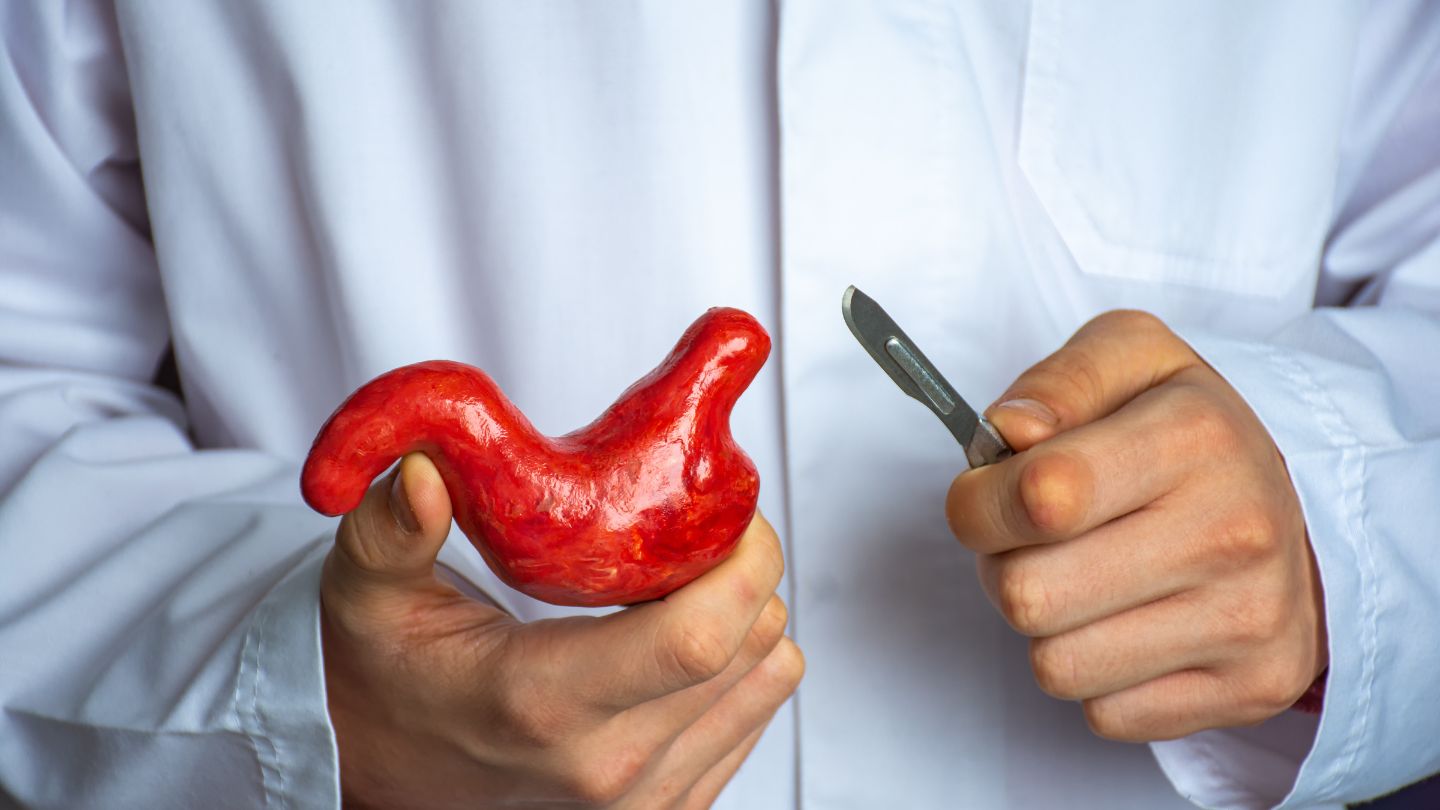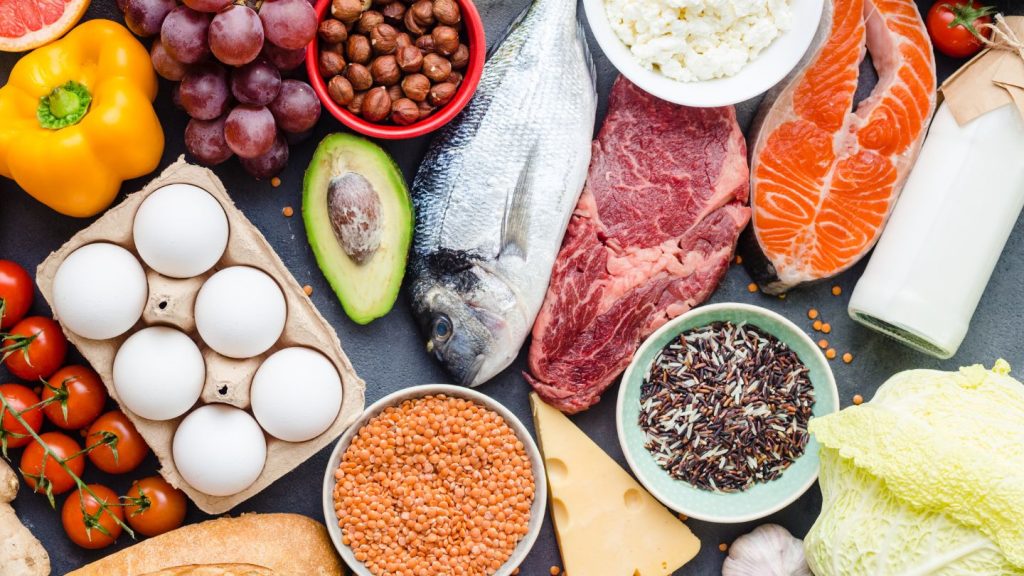
Best Practices for Diet After Duodenal Switch Surgery
Curious about the diet after the duodenal switch surgery? This blog will walk you through each dietary phase, from immediate post-surgery liquids to long-term nutrition tips. Discover essential foods to aid your recovery and manage common post-surgery issues for a smoother journey.
Key Takeaways
- The immediate post-surgery diet emphasizes clear liquids and hydration, gradually transitioning to thicker liquids and soft foods to support recovery.
- Long-term dietary practices after duodenal switch surgery should prioritize high-protein, nutrient-dense foods while avoiding high-fat and sugary options to prevent digestive issues.
- Daily vitamin and mineral supplements are necessary post-surgery to address potential nutritional gaps, including multivitamins, calcium, and vitamin D.
Immediate Post-Surgery Diet

In the vital phase following duodenal switch surgery, your recovery hinges on adhering to a clear liquid diet. As healing progresses, you can slowly move to more substantial liquids. Ensuring adequate hydration by drinking non-caloric fluids like water between meals is crucial for preventing dehydration.
It’s imperative to steer clear of solid foods during the initial post-op days and opt for six to eight mini-meals daily to facilitate optimal recovery from the duodenal switch procedure.
Clear Liquids Phase
After you successfully complete the leak test, you’ll spend seven days on a clear liquid diet. Your main objective during this period is to ensure proper hydration by drinking at least 48 ounces of fluids per day and ideally up to 64 ounces. It’s important to drink these fluids slowly, using small sips, which can help prevent any discomfort. Every quarter-hour throughout your day, partake in sugar-free clear liquids to keep yourself adequately hydrated. Should you feel nauseated or experience vomiting, it may be necessary for you to revert back to consuming clear liquids until your condition stabilizes.
During this initial phase post-leak test, expect that the portions of liquid will be quite minimal. To mitigate stomach distress, Avoid beverages that are either too hot or too cold. Small sip consumption is essential not only for comfort but also for ensuring no undue pressure is placed on your stomach as it heals and adapts—consistent and regular intake of those clear liquids throughout each day remains crucial for maintaining adequate levels of hydration.
Transition to Full Liquids
Upon discharge from the hospital, you may start to include denser liquids, such as protein shakes, into your nutritional regimen. These types of thick liquids are advantageous in providing enhanced nourishment and act as an intermediary stage between the consumption of clear liquids and the intake of solid foods. Initially, serving sizes should be modest, beginning with one tablespoon and potentially increasing to 2 tablespoons if well tolerated. If any newly introduced items or thicker fluids lead to nausea or discomfort, it’s imperative to cease their consumption.
Progressing towards a full liquid diet marks a significant phase in your recovery process by enabling your digestive system to slowly adapt to richer forms of nutrition. The incorporation of protein shakes alongside other substantial liquid options is critical for maintaining proper nutrient intake without straining your gastrointestinal tract during this transition period.
Progression to Soft Foods

Switching to soft foods signifies an important step forward in the progression of your diet following surgery. Your body may require a period ranging from one to two months post-surgery before it can handle solid foods comfortably. It’s crucial, as you move through different phases of your diet that each phase is maintained for a minimum duration of one week, given that you do not experience any complications such as nausea or discomfort.
Commencing with tiny bites and ensuring thorough chewing are key practices to prevent unease when progressing towards more substantial fare. Keep in mind that eating too much food at once or eating hastily could result in unpleasant symptoms like pain or nausea during digestion.
Pureed Foods Stage
Two weeks following your surgery, you may start to include blended and pureed foods into your meal plan. This phase is crucial for gradually adding texture to your diet in a manner that remains digestible. Suitable choices for this stage include low-fat cottage cheese and vegetables that have been pureed, offering essential nutrients while being gentle on the digestive system.
It’s imperative during this time frame to steer clear of bread and meat that cannot be chewed with ease. These items could pose difficulties in digestion and potentially lead to discomfort. Concentrate on selecting foods capable of being transformed into a smooth, pureed consistency that will go easy on your stomach.
Soft Solids Introduction
While you progress in your recovery, begin incorporating soft solids like scrambled eggs and tender fresh fruit into your diet. You should limit yourself to no more than 6 ounces per meal, with an emphasis on including protein in what you eat. This stage aids your system in slowly adapting to firmer foods that are nevertheless simple to chew and digest.
Cease the intake of liquids half an hour before eating meals and meticulously chew soft foods until they attain a consistency similar to applesauce. By doing so, it assists in adequately breaking down the food prior to ingestion, which helps minimize any potential distress or complications related to digestion.
Long-Term Eating Habits

After undergoing the duodenal switch, patients must embrace a modified dietary regimen focused on consuming foods rich in protein and nutrients to support effective weight management. Individuals who have had this bariatric procedure should aim for a daily intake of 65 to 75 grams of protein. While not reaching this target in the first few months post-surgery isn’t critical, it is important that they concentrate on meeting their protein needs as time progresses.
Individuals should incorporate supplements designed for bariatric patients into their diet to compensate for any nutritional deficiencies they may experience after surgery.
High Protein Foods
Protein-rich meals and snacks should be prioritized to help maintain muscle mass during weight loss. Common sources of protein for duodenal switch patients include:
- lean meats
- poultry
- fish
- eggs
- dairy
- legumes
- nuts
High-protein, low-calorie liquid supplement drinks or powders are recommended to meet protein requirements, with a recommended protein content of more than 20 grams per serving.
A long-term meal plan should include at least three ounces of protein at each meal to meet daily protein goals. To maintain weight loss, a balanced intake of nutrient-dense foods, focusing on protein and healthy fats, is essential. Incorporating a variety of nutrient-dense foods into the long-term diet can help prevent nutrient deficiencies.
Avoiding Certain Foods
Before:
Avoiding high-fat and sugary foods is essential to prevent digestive issues and maintain successful long-term dieting post-duodenal switch. Foods such as high-fat yogurt, solid meats, dry meats, raw vegetables, red meats, chicken, breads, and high-fiber fruits and vegetables should be avoided. These foods can lead to digestive discomfort and hinder your weight loss progress.
After:
Foods to avoid to prevent digestive issues and maintain successful long-term dieting post-duodenal switch include:
- High-fat yogurt
- Solid meats
- Dry meats
- Raw vegetables
- Red meats
- Chicken Breast
- High-fiber fruits and vegetables
These foods can lead to digestive discomfort and hinder your weight loss progress.
Practical tips for adhering to these guidelines include avoiding high-fat and sugary foods, eating slowly, and chewing food thoroughly. By making these adjustments, you can help ensure a smoother recovery and better long-term outcomes.
Hydration and Fluids
Maintaining proper hydration is essential following a duodenal switch procedure. Within the initial two weeks after surgery, it’s recommended that patients drink between 1 and 1.5 liters of water or non-caloric beverages daily. When you are in the clear liquid phase, aim for at least 64 ounces of fluid each day. To support your digestive system post-duodenal switch, refrain from drinking any liquids 30 minutes before and after meals.
After undergoing a duodenal switch operation, steering clear of alcohol is imperative because it can cause rapid intoxication and precipitate hypoglycemia (low blood sugar). Even consuming one alcoholic beverage could raise your blood alcohol concentration to levels consistent with being under the influence. This not only hinders recovery but also may impede weight loss efforts initiated by the duodenal switch surgery. Emphasizing the importance of prioritizing hydration over alcohol intake during this critical time period.
Nutritional Supplements

Post-duodenal switch surgery, it’s imperative to compensate for the change in nutrient absorption by taking vitamin and mineral supplements daily. It is advised that individuals include an extensive-spectrum multivitamin, along with additional calcium, vitamin D, and iron, in their regimen.
Incorporating these nutritional additions assists in bridging any deficiencies, ensuring that essential nutrients are supplied to the body, which aids both healings and sustains enduring wellness.
Multivitamin Supplement
Patients who have undergone duodenal switch surgery are advised to take comprehensive multivitamins in order to compensate for their diminished nutritional intake. These multivitamins play a critical role in forestalling potential deficiencies that might arise as a result of the modified absorption of nutrients post-surgery.
For the initial three months following the procedure, it is recommended that patients consume two chewable tablets each day.
Calcium and Vitamin D
Calcium citrate is the preferred form of calcium for supplementation due to its better absorption. Calcium and vitamin D are essential for maintaining bone health, especially after duodenal switch surgery.
Vitamin D should be taken in divided doses of 400 to 500 IUs twice a day, ideally with calcium supplements.
Vitamin B12 and Other Supplements
Vitamin B12 plays a vital role in maintaining energy levels and bolstering the immune system, which is particularly important following weight loss surgery. Post-bariatric surgery patients are advised to consume 500 mg of vitamin B12 daily. Certain individuals may need supplemental nutrients such as folic acid or iron following their surgical procedure. This is especially the case for menstruating women.
A dietitian will engage with patients regarding the necessity of extra supplementation after their bariatric surgery procedures.
Your Path to Success After Duo Switch Surgery
In summary, successfully transitioning through the dietary phases after duodenal switch surgery is vital for recovery and long-term health. From clear liquids to soft foods and, finally, solid meals, each stage supports healing, weight management, and your body’s new nutritional needs. Prioritizing high-protein foods, staying hydrated, and incorporating necessary supplements can help prevent common post-surgery complications. With patience and dedication, you can adapt to these new habits and achieve sustained weight loss and a better quality of life.
At Wellstar Comprehensive Bariatric Services, we’re here to guide you every step of the way. For expert duo switch surgery in Cobb County, Marietta, Austell, LaGrange, Smyrna, and other locations across Georgia, our dedicated team provides specialized care tailored to your needs. We offer comprehensive resources and personalized support to ensure your success every step of the way. With our support, you’ll have access to the tools and knowledge you need to navigate your journey confidently. Ready to take the next step? Contact us today to discover how we can help you transform your health and life.
Frequently Asked Questions
What are the initial dietary phases after duodenal switch surgery?
Following a duodenal switch surgery, the dietary regimen starts with a clear liquid diet. This is then followed by progression to full liquids and, afterward, pureed foods before finally reaching the stage of soft solids.
This gradual increase in food texture is critical for both recovery and adjustment to the altered digestion after a duodenal switch procedure.
Why is it important to prioritize high-protein foods after surgery?
It’s crucial to place an emphasis on consuming foods high in protein following surgery because they play a key role in maintaining muscle mass, accelerating the healing process, and fostering better health outcomes over time.
Emphasizing such protein-rich foods can markedly improve the speed and effectiveness of recovery.
What are some common post-surgery issues, and how can they be managed?
Issues following surgery, such as dumping syndrome, food sensitivities, and symptoms of nausea and vomiting, can often be controlled by modifying one’s diet, maintaining adequate hydration levels, and early detection of any signs.
By taking such preventive measures, the road to recovery can become much more manageable.
Why are nutritional supplements necessary after duodenal switch surgery?
After undergoing a duodenal switch surgery, it is essential to take nutritional supplements. This compensates for the decreased absorption of nutrients and helps prevent deficiencies that might otherwise affect general health.
As such, these supplements are vital for both the recovery process and maintaining long-term health in patients who have had a duodenal switch.
What hydration guidelines should be followed post-surgery?
It is crucial, following surgery, to ensure the intake of 1 to 1.5 liters of water or liquids that do not contain calories every day. It’s important not to drink any fluids within a 30-minute window before or after eating and to abstain entirely from alcohol.
By following these instructions meticulously, you will aid in your recuperation process and promote your general health.
